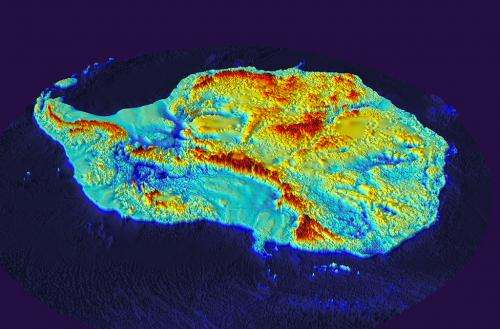Bedmap2 gives scientists a more detailed view of Antarctica's landmass

Scientists at the British Antarctic Survey have been working with a host of international collaborators to present the most detailed map yet of Antarctica's landmass. Bedmap2 reveals a landscape of mountain ranges and plains cut by gorges and valleys much deeper than previously seen.
In addition, the map allows scientists to analyse, in much greater detail, the bed below the Antarctic ice sheet.
Several features of the bed have been revealed for the first time including a new deepest point. The bed under the Byrd Glacier in Victoria Land is 2,870 metres below sea level making it the lowest point on any of the Earth's continental plates.
The map was compiled using datasets collected from radio echo sounding measurements, seismic techniques, satellite readings and cartographic data.
A number of key statistics emerge:
- The volume of ice in Antarctica is 4.6% greater than previously thought
- The mean bed depth of Antarctica, at 95 metres, is 60 m lower than estimated
- The volume of ice that is grounded with a bed below sea level is 23% greater than originally thought meaning there is a larger volume of ice that is susceptible to rapid melting. The ice that rests just below sea level is vulnerable to warming from ocean currents
- The total potential contribution to global sea level rise from Antarctica is 58 metres, similar to previous estimates but a much more accurate measurement
- The new deepest point, under Byrd Glacier, around 400 metres deeper than the previously identified deepest point
Dr Hamish Pritchard, co-lead author of the study, says: "The Bedmap2 project is about more than making a map of the landscape. The data we've put together on the height and thickness of the ice and the shape of the landscape below are fundamental to modelling the behaviour of the ice sheet in the future. This matters because in some places, ice along the edges of Antarctica is being lost rapidly to the sea, driving up sea level. Knowing how much the sea will rise is of global importance, and these maps are a step towards that goal."
More information: www.the-cryosphere.net/7/375/2 … 13/tc-7-375-2013.pdf
Provided by British Antarctic Survey

















